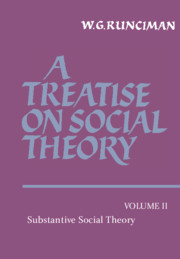3 - Social structure
Published online by Cambridge University Press: 10 January 2011
Summary
STABILITY AND DISSENT
§1. To ask of any reported society ‘How does it work?’ is to presuppose that the pattern of its constituent roles is stable enough for it to be categorized at all. But stability is a relative matter. Societies are not only sets of itemized roles, but systems of social relations in motion. Quite apart from the continual entry of native-born children, if not also of immigrants, into their roles, and losses by death or emigration, it is hardly plausible to suppose that there has ever been, or ever will be, a society or institutional catchment area in which no single person is trying to alter in any way the existing distribution of power. But there are very different degrees of instability. At one extreme, there are societies so stable that even a participant-observer who spent a lifetime in the field would see no significant difference in either their itemized roles and the practices defining them or in their rates of social mobility. At the other extreme, there are societies where a few days' visit would be enough to reveal not only the location and content of their itemized roles but also the distribution of their incumbents to be in continuous turmoil. The question ‘how do societies work?’ is not, therefore, to be construed as ‘what keeps them stable within their given mode and subtype?’ so much as ‘what keeps them no more unstable than they are?’
- Type
- Chapter
- Information
- A Treatise on Social Theory , pp. 123 - 284Publisher: Cambridge University PressPrint publication year: 1989



